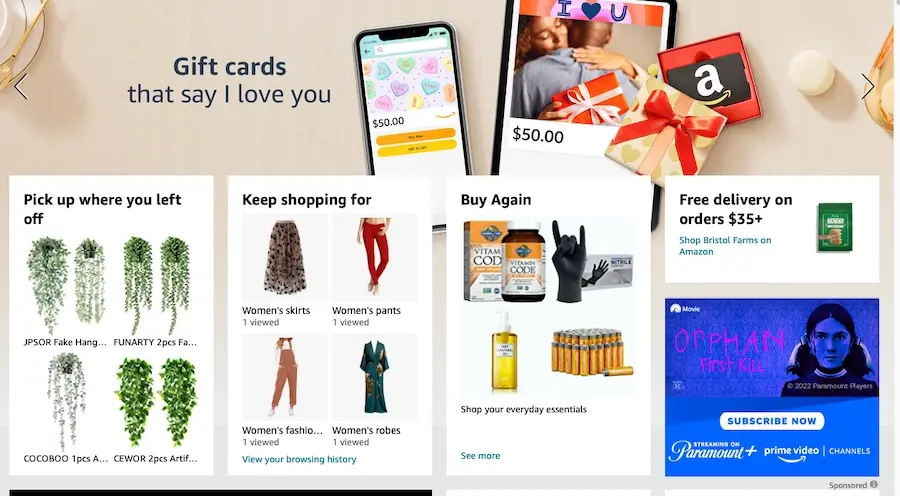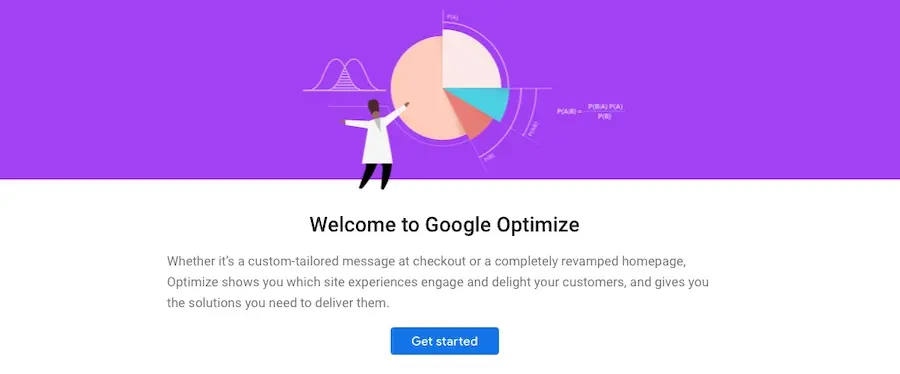Storytelling has long been an effective way to capture the attention of your audience and keep them engaged. It makes sense then why this approach is being leveraged in web design more and more. Story-based web experiences are becoming increasingly popular as the years go by. So when you combine the power of storytelling with intuitive design, you can create a captivating website that users will find both visually appealing and informative.
But applying storytelling techniques to web design choices can feel a bit foreign at first. After all, what do a homepage, about page, and contact us page have to do with telling a story? How on earth can simple website architecture be used to tell a tale?
That's why today we'll be discussing some of the storytelling techniques that can be applied directly to web design. Likewise, we'll showcase various ways you can use these techniques in your next project.
To begin, however, let's talk about some of the benefits of using storytelling in web design.
How Can Storytelling Help Web Design?
Incorporating storytelling into web design can have a number of benefits. Let's review them now.
Enhancing User Engagement
One of the main benefits of storytelling in web design is that it can make your website more interesting and engaging for users. When you tell a story on your website, you're helping users understand the purpose of the site and the products or services offered in a more relatable and memorable way. This can lead to increased user engagement and ultimately more conversions.
This also helps create an emotional connection with your audience. When users can relate to a story, they become more invested in the product or service you're offering.
Improving Brand Storytelling and User Retention
Another benefit of storytelling in web design is that it can help improve brand storytelling and user retention. By creating a consistent brand narrative that helps users understand and remember your brand, you can increase loyalty and user retention. This is especially important for eCommerce websites, where users are more likely to return if they have a positive experience.
You can see this in action with companies like Amazon, which has built a strong brand narrative by focusing on customer service and convenience.

Creating a More Immersive User Experience
Storytelling can also be used to create a more immersive user experience by making the website feel more like a journey or adventure. This can help keep users on the website longer and make them more likely to convert.
For example, a website that sells travel gear could use storytelling to make the user experience more immersive. It could feature stories of people using the products on their adventures, or it could feature stories from the people who created the products. This would help create a more personal and engaging experience for site visitors.
So now you know the "why," so let's discuss the "what." That is, what storytelling principles you can use in web designing.
Storytelling Principles to Know

Image source: Unsplash
Let's discuss some of the most important storytelling principles to know when it comes to web design:
1. Narrative Arc
A narrative arc is the backbone of any good story. It's the structure and sequence of events that help drive the story along. In web design, you can use this same structure to help guide users through your website.
2. Characterization
Characterization is all about making a connection to the user. When crafting a narrative, you can incorporate characters that have experiences and emotions people can relate to and identify with.
3. Descriptive Language
Using descriptive language can help create a sense of atmosphere and emotion within a story. Incorporating words and phrases that evoke feeling, as well as imagery that gives the reader a clear picture of what's happening is ideal.
4. Emotional Journey
The characters in your story should go on an emotional journey to make it memorable and impactful. Incorporating highs and lows with a satisfying conclusion will help users engage with the website.
These four storytelling techniques can be directly applied to the web design process. And that's what we'll be discussing now: the ways you can use storytelling in web design to great effect.
Techniques for Incorporating Storytelling in Web Design

Image source: Unsplash
There are many different ways you can incorporate storytelling into web design. Here are just a few:
Use Images and Videos to Tell a Story
Images and videos are powerful tools for storytelling because they can be used to create a visual narrative that captures users' attention and evokes emotions. If used correctly, they can be a great way to communicate a story and bring visitors along for the ride.
Use Typography and Layout to Create a Narrative
Typography and layout can also be used to create a story. For example, using a large header font and a bold color scheme can help create a sense of drama and importance. Additionally, arranging text and images in a certain way can create a narrative structure that helps lead users through the website.
These elements can also create a thorough line across different page sections, encouraging visitors to continue to scroll.
Use Animations and Interactive Elements to Engage Users
Similarly, animations and interactive elements can be used to keep site visitors engaged and “present”. For example, using animations to reveal content as users scroll through the website can make the experience feel more like a journey. And interactive elements like quizzes and surveys – or even interactive buttons – make visitors feel like they have a role to play in this experience.
Use Case Studies and Customer Testimonials to Showcase a Brand's Story
Case studies and customer testimonials can be used to showcase real-life examples of how a brand has helped its customers. This can help users understand the brand's story and mission in a more relatable way.
Make Sure the Story is Relevant to the Brand and Audience
The story you tell on your website should be relevant to your brand and its audience. It should also align with your brand's mission and values. This will ensure that users have a positive experience and are more likely to convert. You can do this by researching your customers and understanding their needs and desires first before completing a single design step.
Create a Consistent Narrative Across All Pages and Sections of the Website
The story should be consistent across all pages and sections of your content. This will help users understand your brand's story and mission in a more relatable way. Additionally, a consistent narrative will help create a seamless experience as users travel through the website.
Use Storytelling to Guide the User Flow
The story should be used to people through the user flow you want them to follow. Incorporating storytelling techniques such as images, videos, animations, and interactive elements can help keep users engaged and "on the path," so to speak. And, this narrative building and guidance can work wonders for reducing bounce rate.
Test and Optimize for Engagement and Conversion
It's important to test and iterate on the storytelling elements in order to optimize engagement and conversion. This will help ensure that the story resonates with users and that they understand the brand's mission and values. Additionally, testing will help you discover which elements are working and which are not so you can make the appropriate changes.
With the help of these techniques, you can make storytelling an integral part of your website design. This will not only captivate visitors but also inspire them to take action right away.
Tips & Tricks for Crafting a Compelling Story

Before we part ways, here are some tips and tricks to help you craft a compelling story on your website from the outset, without overthinking it.
1. Make sure the story is clear and concise: The story should be easy to understand and follow. Keep it focused on the key message.
2. Use visuals to help tell the story: Bringing your stories to life with visuals is a powerful way to captivate users and evoke strong emotions. Photos, videos, animations, or even interactive elements can all be used to create an engaging story that will draw in viewers and make them feel something.
3. Keep it relevant to the brand: Make sure the story aligns with your brand's mission and values, so users understand the message you're trying to convey. Don't just tell a story to tell a story -- it should connect directly with the actions you want your visitors to take.
4. Test and iterate: Test different elements of the story to see what works and what doesn't, and then make improvements over time. You can use A/B testing tools to achieve this like Google Optimize.
5. Make sure that the story is consistent across all platforms: The story needs to be told consistently across all pages and sections of your website, as well as throughout all other platforms you use (social media, etc.). It should be the same story everywhere, so users have a seamless experience no matter where they come in contact with your brand.
Leveraging the Power of Storytelling to Engage and Convert Customers
Storytelling is an important tool for creating engaging and immersive user experiences. By leveraging the power of visuals, animations, interactive elements and customer testimonials to create a compelling narrative that aligns with your brand's mission and values, you can capture users' attention and evoke emotions that will help lead them through the website’s user flow toward conversion. And don't forget to test to make sure they're delivering the desired results.
Of course, your site should be built on reliable website hosting as well. Whether you're in the market for cloud hosting or hosting for WordPress, Verpex has you covered with reliable and secure hosting solutions that can support your storytelling efforts.
Now, with these tips in mind, start crafting a powerful story today!
Frequently Asked Questions
Why should I create a website?
There are many reasons why you should create a website if you’re an artist. You can use it to create a place where people can learn about you, talk about your art, or show off your work.
How do I choose a design for my website?
One of the most important things when creating a website for your art is the design. Even though your pieces of art might be amazing, people will leave if your site is hard to navigate. This is why it’s important that the site is easy on the eyes and easy to navigate.
How to design a podcast website?
When using a CMS, designing your website will be quick and easy. You can add a template you’ve created or pick one of the pre-made templates that the CMS features in its library.
Is a website on WordPress safe?
Websites on WordPress are safe, however to avoid hacking keep your website up to date.

Brenda Barron is a freelance writer and editor living in southern California. With over a decade of experience crafting prose for businesses of all sizes, she has a solid understanding of what it takes to capture a reader's attention.
View all posts by Brenda Barron





















